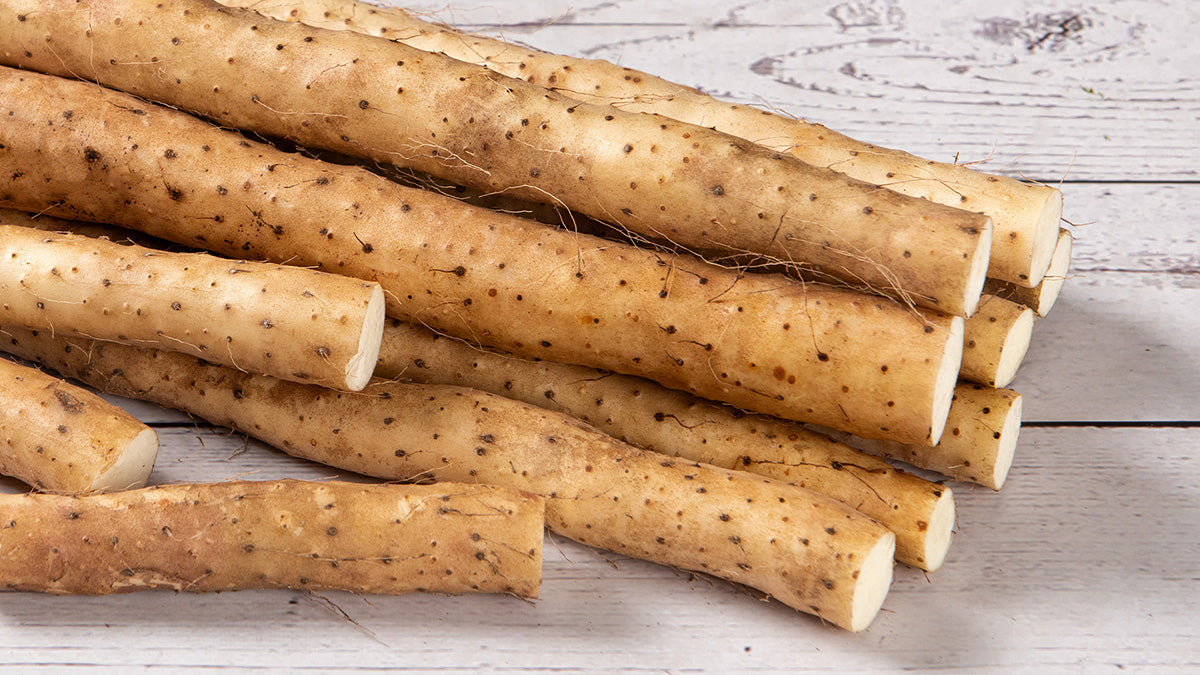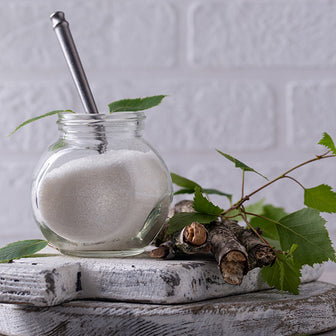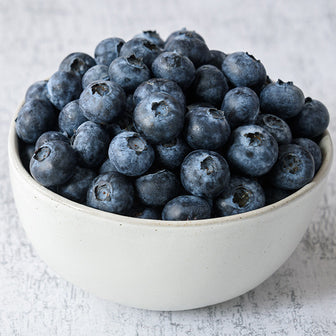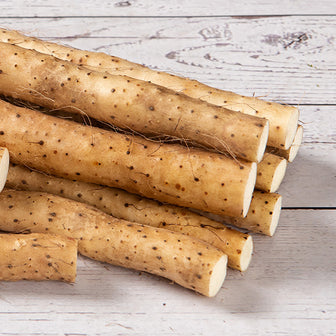Yams are packed with nutrients for humans — but are they safe for dogs? Learn how this humble tuber can benefit (or harm) your pup depending on how it’s prepared.
Can dogs have yams?
Are yams safe to feed my dog? First, it is important to clarify what a yam is. Yams are commonly confused with another root vegetable, the sweet potato. Yams are indigenous to Africa and Asia and are a member of the plant family Dioscorea. There are several varieties of yams, but generally they are roots with a rough brown skin and very pale light flesh. When cooked, yams are safe for dogs and have a more neutral flavor than the sweeter sweet potato.
Benefits of yams for dogs
Yams are an excellent source of nutrients for healthy dogs.
- Fiber: Fiber keeps your dog’s digestion running smoothly and supports healthy gut bacteria. Fiber-rich diets are also shown to help delay the release of glucose in food during digestion and as a result aid in the control of blood sugar levels. However, since most dogs with diabetes need insulin, not just dietary changes, fiber alone isn’t enough to manage the condition.
- Potassium: Potassium helps with muscle movement, nerve signals, fluid balance, and healthy blood pressure. Dogs with kidney disease often lose too much potassium because their kidneys can’t regulate potassium levels. Since yams are a natural source of potassium, they can help replenish this important mineral.
- Brain and neurologic function: Yams contain a natural plant compound called diosgenin, which may support brain and nerve function. Early studies suggest it could even help senior dogs showing signs of cognitive decline, though more research is needed.
- Copper: Copper supports red blood cell production and overall energy levels.
- Vitamin C: Vitamin C acts as an antioxidant, helping the immune system and supporting healthy skin, bones, and joints. Dogs do make their own vitamin C, but extra from foods like yams can give their immune and metabolic systems a helpful boost.
- Vitamin B: Yams are rich in vitamin B6 (pyridoxine), which helps with energy metabolism, nerve function, and red blood cells formation. It’s an essential vitamin that contributes to your dog’s overall vitality.
Recommended Reading
How to feed yams to your dog
Cooked, canned, or raw? Now that you know the benefits of feeding yams to your dog, it’s important to learn how to prepare them properly and safely.
Can dogs eat raw yams?
No, dogs should not eat raw yams. The raw yam and its skin contain oxalates. These chemicals can cause kidney, gastrointestinal and nervous system signs if ingested.
Can dogs eat canned yams?
Avoid feeding your dog canned yams as they often contain large amounts of sugars, sweeteners like xylitol, and preservatives. Xylitol is a sugar substitute that can cause severe low blood sugars and liver failure in dogs.
Can dogs eat cooked yams?
Yams need to be cooked before being fed to our canine companions. Cooking — whether you steam, boil, or bake — breaks down the natural oxalate in yams, making them safe and non-toxic for your dog. Avoid using any seasonings especially garlic and onion as these are both toxic to dogs themselves. Dogs don’t need seasonings on their food the way we do. Sauteing and baking are excellent ways to prepare the yams. Just avoid frying in olive and vegetable oils as the fats in the oils can result in gastrointestinal issues like vomiting and diarrhea.
In general, cooked yams are a safe food to supplement dogs’ diets of all ages.
“Cooked yams, served plain and in moderation, can be a safe, nutrient-rich boost to your dog’s diet — offering fiber, potassium, and even compounds that may support brain health.”
Dr. Max Gordon, DVM
How much yam should your dog eat?
Like any treat, moderation matters. The right portion depends on your dog’s size, age, and overall health. Start small and see how your dog responds before making yams a regular part of the diet.
- Small dogs: 1–2 tablespoons of cooked yam per serving
- Medium dogs: 1–4 tablespoons of cooked yam per serving
- Large dogs: ¼–½ cup of cooked yam per serving
When not to give yams to your dog
Avoid yams if your dog has:
- Pancreatitis: Pancreatitis happens when the body activates digestive enzymes too early, causing irritation and inflammation in the pancreas. Dogs with this condition often experience vomiting and diarrhea. While recovering, they need a low-fat, easily digestible diet. Because yams are high in fiber, they can sometimes make stools looser and worsen diarrhea.
- Dogs with digestive issues: If your dog has a history of digestive problems, it’s best to be cautious with yams. Their high fiber content can sometimes upset sensitive stomachs or make stools too soft.
- Kidney disease: Dogs with kidney disease due to concern for the high potassium level of the yam or those prone to obesity should also skip yams unless a veterinarian approves.
- Copper storage disease: If your dog has copper storage disease — a liver condition seen in breeds such as Bedlington Terriers, West Highland White Terriers, Skye Terriers, Doberman Pinschers, Labrador Retrievers, Keeshonds, American Cocker Spaniels — do not feed yams without veterinary approval. Dogs with this condition cannot process copper properly, which can lead to liver damage.
Key takeaways
When properly prepared, cooked yams can be a safe and nutritious supplement to a dog’s diet. However, preparation must be plain and portions should remain moderate. Dogs with underlying conditions such as kidney disease or copper storage disease may require stricter dietary management, so consultation with a holistic veterinarian is advised before introducing yams.














